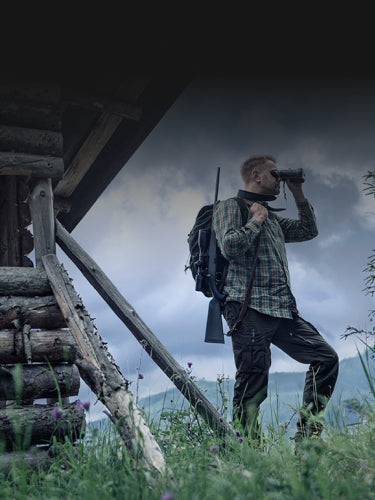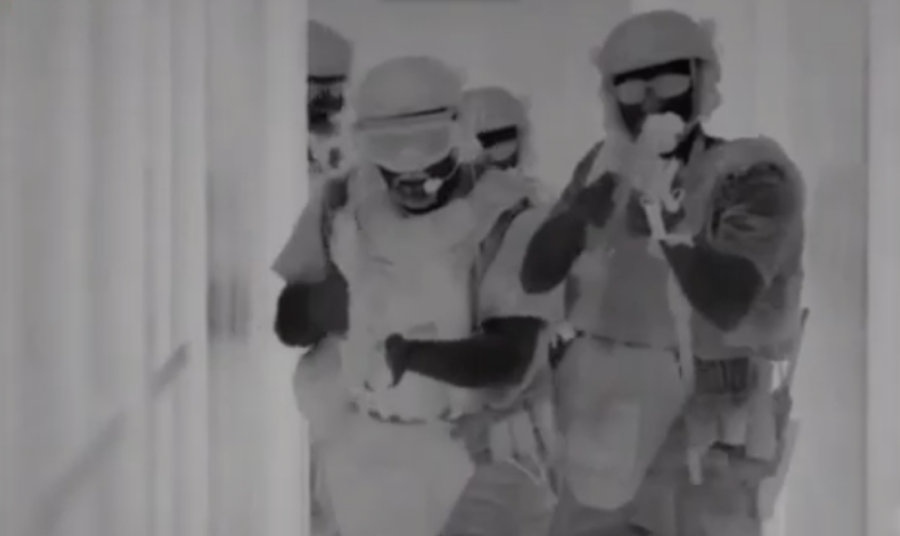As law enforcement agencies adapt to evolving threats and technological advancements, thermal imaging has come to be seen as a pivotal tool in helping officers detect and locate suspects, monitor activity, and maintain safety—often in situations where conventional methods fall short. Pulsar spoke with a Texas police officer whom we’ll refer to as 'JC,' who shared his firsthand insights into the effectiveness of thermal devices, particularly during his time on midnight patrol from 2019 to 2022. Here, we explore the key applications, benefits, and practical challenges officers encounter when integrating thermal technology into their daily work.
Tracking and Surveillance
For JC, the primary value of thermal imaging lay in its power to locate individuals during foot chases and hidden search scenarios, especially in situations where the suspects had fled on foot and concealed themselves in hard-to-reach or darkened areas. Traditional search methods, like flashlights and area perimeter setups, often create blind spots, inadvertently assisting suspects by casting shadows that provide cover. Pulsar’s thermal optics allowed officers to scan and identify body heat, which was particularly useful for locating individuals hiding in areas a flashlight might miss or obscure.
In situations where helicopters were not available or would take too long to arrive, Pulsar thermal devices became essential for tracking individuals quickly and safely. Another practical use involved identifying suspect vehicles by checking if a parked car emitted residual heat. JC would scan for recently used vehicles after pursuits, checking whether suspects had parked in nearby neighborhoods or driveways. The technology even proved helpful in spotting foot traffic and activity around suspected drug houses, providing officers with an initial assessment of movement without alerting individuals on site.
Recording and Streaming Capabilities for Evidence Gathering
Among the most valued features were the recording and streaming functions, which allow real-time video sharing among officers and serve as compelling visual evidence in court. In JC's words, “Courts and juries want to see the video and pictures of everything.” This capability becomes an objective witness, showing how officers apprehended suspects and detailing the circumstances surrounding arrests.
The ability to stream footage also provided other officers on scene with another set of eyes, further improving safety and situational awareness. With such technology, officers can work more collaboratively and ensure they do not miss critical details in high-stakes situations.
Saving Time and Lives
In recounting specific incidents, JC emphasized that thermal imaging can be the deciding factor between safe resolution and dangerous oversight. “There were multiple times when I caught a suspect hiding from officers, and the suspect was just feet away,” he explained. Even high-powered flashlights may fail in some cases, casting shadows and illuminating unintended areas that could mask a person’s location. Thermal optics allowed him to pinpoint suspects who were mere feet from his colleagues, transforming what could have been a risky situation into a controlled apprehension.
Beyond suspect tracking, thermal devices were crucial in searches for missing persons. The ability to scan porches, sides of buildings, and darkened areas quickly was especially advantageous in urban environments where the line of sight is limited. As JC shared, thermal devices reduced search times and increased the certainty with which officers could cover ground. This efficiency becomes critical in scenarios involving vulnerable or endangered individuals.
Operational Challenges and Environmental Conditions
JC's experience also proved how thermal optics could adapt to a range of environmental conditions. While cooler temperatures between 30 and 50 degrees Fahrenheit yielded the best results, the devices performed reliably in rain, fog, and even the Texas summer heat. Thermal optics can face difficulties in higher temperatures, especially at night when ambient temperatures remain elevated. In extreme heat, detecting a clear contrast between human heat signatures and the environment becomes more challenging, although JC noted that officers would still attempt to use thermal optics regardless of the temperature.
Intuitiveness and Usability Under Pressure
When lives are on the line and operators need to utilize their equipment under pressure, that equipment needs to start up quickly and be easy to use. JC praised the rapid startup and straightforward functionality of the Pulsar devices, which allowed for quick deployment in critical moments.
Thermal devices in law enforcement face rigorous daily use, requiring durability and dependability. JC reported zero durability issues with his Pulsar devices, despite three years of use. Such longevity and resilience indicate that these devices are suitable for law enforcement needs, although developing long-lasting batteries remains an area for improvement to keep up with the demands of continuous fieldwork.
Practical Results
Thermal imaging allowed JC to locate and apprehend around 5-6 suspects over several years, excluding countless instances where the devices aided in smaller investigations and surveillance tasks. The ability to quickly assess and scan an area enhanced officers’ confidence and efficiency, reducing time spent in potentially hazardous situations. From JC's experience, thermal technology does not merely improve operational effectiveness—it has the potential to save lives by preemptively identifying threats.
Future Considerations for Thermal in Law Enforcement
As thermal imaging continues to evolve, improvements in app functionality, battery life, and ease of control will likely increase its utility and adoption within law enforcement. Enhanced app integration, for instance, could allow officers to control devices remotely and share live feeds across multiple personnel seamlessly. Advanced training that incorporates high-stress, real-life scenarios could also boost officers’ proficiency and comfort in using these devices.
Thermal imaging is revolutionizing law enforcement practices, equipping officers with tools that provide greater situational awareness and reduce response times. JC’s experience is a testament to how thermal optics can serve as an essential resource in public safety, bridging the gap where visibility and accessibility may be limited. For Pulsar, listening to feedback like this from officers on the front lines will be key to refining devices that meet the needs of those who rely on them daily to protect and serve.
FAQs about Thermal Imaging in Law Enforcement
1. How does thermal imaging help law enforcement officers?
Thermal imaging helps officers detect and locate suspects, monitor activity, and maintain safety in situations where conventional methods fall short.
2. What are some practical applications of thermal imaging for law enforcement?
Some practical applications include locating individuals during foot chases, identifying suspect vehicles, and spotting activity around suspected drug houses.
3. How does thermal imaging technology save time and lives?
Thermal imaging can be the deciding factor between safe resolution and dangerous oversight, helping officers catch suspects quickly and safely.
4. What are the benefits of recording and streaming capabilities in thermal imaging devices?
Recording and streaming functions allow real-time video sharing among officers, serve as compelling visual evidence in court, and improve safety and situational awareness.
5. What challenges do officers encounter when integrating thermal technology into their daily work?
One practical challenge is the reliance on helicopters for thermal imaging in situations where they are not available or would take too long to arrive.




